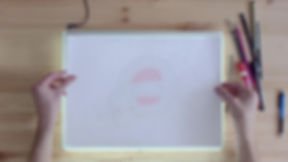

In part 1 of this article (1) I explored how permaculture is very much linked to practices of peacebuilding and in particular to the use of our “moral imagination” (2). As a holistic lens through which to view the world, which encourages curiosity and creativity and includes the possibility of stepping outside of societal or cultural norms, permaculture has many similarities to the moral imagination as described by John Paul Lederach (2). Theoretically, then, permaculture can be a tool not only for landscape design but also for helping to re-imagine or rebuild communities which for some reason have ceased to function or are not functioning in a healthy way, as Lederach does in his line of work. But how can we apply this theory practically? This article will look at how using these theories can have a lasting practical impact, beginning on an individual level and rippling outwards to communities, societies and the world.
BUILDING PEACE INSIDE OURSELVES
Permaculture and peacebuilding are both on some level about finding ways in which a community or system is functioning ineffectively and changing that, hopefully for the better. It can be deceptively easy to go about this change-creation from an outside-in approach; i.e. to have an idea and then to try to apply that thing to the people, creatures and other things around you. This seems to be the approach of many governmental institutions. The idea that we can only create change outside ourselves once we have created change within is one so often repeated it could almost be called a cliché. Since much of our cultural training appears to lead away from this idea, though, I am going to repeat it again here (briefly) anyway.
Mohandas Gandhi published a paper in 1913 in which he said
“We but mirror the world. All the tendencies present in the outer world are to be found in the world of our body. If we could change ourselves, the tendencies in the world would also change. As a man changes his own nature, so does the attitude of the world change towards him.” (3)
This simple idea has been explored by practitioners of all fields, for many decades or more likely centuries, though it seems of particular importance in today’s world of seemingly instant technology and desires for quick-fix solutions coming from outside. A lot of the time it is easy to see how Gandhi’s words are true on an intellectual level. It is quite another thing to apply the idea that until you change yourself you cannot change anything. From this perspective, any improvements you wish to make in the outside world have to begin in your own mind and body.
HEALING INSIDE AND OUT
As mentioned in part 1 of this article, ‘violence’ is not necessarily the sole property of war-torn countries and states but may well be present in all of our daily lives. In the same way, many psychologists have theorized that ‘wounding’ of a psychological nature is not a rare occurrence that happens only to those doomed to mental institutions, but is, in fact, something which is unavoidable, particularly in a culture in which daily un-empathetic communication is to a large extent encouraged (see for example 4). Firman and Gila (4) call this “primal wounding”; damage to our psyches which occurs when we are not accepted as an authentic and holistic personality, and which can create psychological scarring. They are not the only ones to postulate that a lot of the environmental destruction we can see occurring in the world is made possible by the fact that we have received similarly destructive wounding in our psyches by being denied what they call an “empathic holding environment” (4), (5). Little wonder then, that we sometimes engage in
” massive abuses of the natural environment that threaten the holding environment that every one of us shares—the planet Earth itself” (4)
The key to these primal wounds, however, is that they can be healed. There are numerous ways to do this. Firman and Gila recommend reconnecting to the previously wounded parts of your psyche, through gentle and empathic therapy; David Abram recommends reconnecting to the wordless language of the “animate landscape”, through enlivening and enrichment of our senses (5). The key seems to be that we know in theory what needs to be done but until we do it
via Simplify
Deel met Familie, Vrienden en Kennissen, zij zullen U dankbaar zijn | *•.¸♡ ᴡᴏʀᴅᴘʀᴇs-ʙʟᴏɢɢᴇʀs ɢᴇʙʀᴜɪᴋ ᴅᴇ ʜᴇʀʙʟᴏɢ-ᴋɴᴏᴘ ♡¸.•*
Klik om te delen met Twitter (Wordt in een nieuw venster geopend)
Klik om te delen met Reddit (Wordt in een nieuw venster geopend)
Klik om te delen op Facebook (Wordt in een nieuw venster geopend)
Klik om te delen op Pocket (Wordt in een nieuw venster geopend)
Klik om op LinkedIn te delen (Wordt in een nieuw venster geopend)
Klik om op Pinterest te delen (Wordt in een nieuw venster geopend)
Klik om op Tumblr te delen (Wordt in een nieuw venster geopend)
Klik om dit te e-mailen naar een vriend (Wordt in een nieuw venster geopend)
Klik om te delen op Telegram (Wordt in een nieuw venster geopend)
Klik om op Skype te delen (Wordt in een nieuw venster geopend)
Klik om te delen op WhatsApp (Wordt in een nieuw venster geopend)

